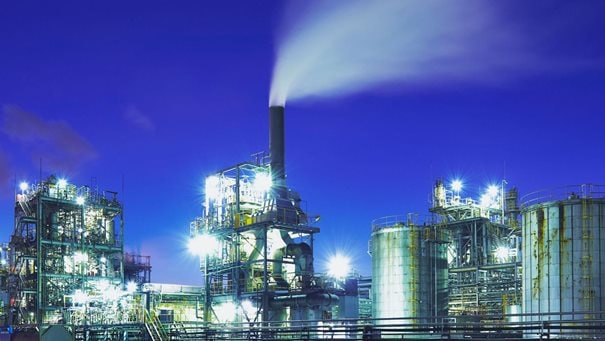The fundamental driver perspectives have been very positive for the industry since last 2 years.

Chemicals have come out of the crisis stronger than the world market, recovering from a 3-year-old TRS (total revenue swap) deterioration and in the last 4 years, industry was staring at a rocky road ahead but since the last 2 years, the fundamental driver perspectives have been very positive, says Obi Ezekoye, Partner & Leader-McKinsey’s Specialty Chemicals Service Line.
Ezekoye shared his thoughts along with other McKinsey & Company experts at the webinar on ‘Capital Market View on the Industries of Chemistry’ organized by the Chemical Marketing & Economics (CME Stem).
Talking about the growth in various chemical segments and outlook for 2022, Ezekoye says, “Looking at 20 years data from 500 companies, the improvement in revenue performance and ROIC (Return On Invested Capital) turned out to be the values. Low ROIC companies mostly create value by increasing ROIC, while high-ROIC companies create value through faster growth. Chemical companies are valued on a "show me the money" basis and ROIC is the driver and not EBITDA. From a 2001-2020 perspective, volume growth in base chemicals has been driven by demand growth in Asia. Outlook going forward in this case is that volume growth for chemicals has been trending downward but it is maturing and increasingly self-sufficient markets in Asia.”
“Earlier sustainability was just a buzzword but going forward, ESG is here to stay and will impact the traditional chemicals industry in a number of ways. Players with exposure to sustainability tailwinds in their end-markets show significantly higher performance. Technology will save us. Increased adoption of modern technology will likely make the consumption of physical products more efficient, impacting volume growth. AI is increasingly pervasive in all activities, be it production, marketing, sales, and R&D, opening the way to a new level of functional excellence,” adds Ezekoye.
“When we look at the value creation matrix relevant to the ESG scores, we see no correlation. We have looked at TRS, return on capital, EBITDA and other parameters and found that the ESG score of companies have relevance to the industries they are in. The correlations are low in chemical companies in the new matrix as compared to old one. How can sustainability be at the center of investors' dialogue and yet there is no relation to the new matrix score? The investors continue to use the primary matrix score. However, chemical companies with exposure to sustainability tailwinds can command a significant premium. Investors assign a premium for sales that enable end markets and are not solely focused on the sustainability of the chemicals sold,” says Jeremy Wallach, Partner & Leader McKinsey Chemical Insights Micro-economics Group.
“Outsized valuation benefit given to sustainability tailwinds. Investors assign asymmetric benefit to sustainability tailwinds market including EV, energy storage, water reduction, bio-based consumer products, renewable energy, feedstock fuel etc. as opposed to the penalty assigned to sustainability headwind markets which include oil and gas, single use plastics, ICE automotive etc. Most companies will have a mix of revenue tied to these categories. It is important to consider the composition of a company's end market alignment. Companies will receive a boost in value from a portion of end market revenue aligned to sustainability tailwinds,” adds Wallach.
“Last year proved to be a record year in terms of chemical PE activity, with carve outs growing as a source of deal flow. There were over 120 deals in the last one year, 60% more than what we saw 2 years ago. If you look at the source of deals, PE owners have become better at value creation over time, with most of the value coming from ‘true value levers’,” says Laurens Seghers, Partner & Leader-Chemicals & Private Equity JV.
Seghers says, “There are 4 distinct chemical-PE play archetypes. First is disruptive growth. Here the target has exposure to markets that are growing fast and have the momentum to accelerate. Product portfolio plays either in segments that are being disrupted positively or include new technologies enacting profitable faster than market growth. It may require growth investments that are not currently provided either due to limited funds or better options. Second is margin enhancement. Here target plays in a segment with favorable industry structure and predictable behavior enabling constant cash delivery. Performance improvement efforts primarily in productivity and secondarily in commercial provide upside. Third is buy and build. Target competes in a segment with robust demand fundamentals but with many small players competing for growth. Roll up provides opportunity for synergy capture at scale for improvement in overall structure and margins, as well as through discipline and improved value proposition. Fourth is turnaround or full transformation. Here the target plays in a market that has been challenged. Opportunity to radically improve operational performance, with room for segment consolidation down the road. In chemicals, a frequent example are players with commodity-like offerings that used to be specialty."
Sam Samdani, Senior Knowledge Expert, McKinsey concludes, “A rough estimate suggests around US $380 billion of value is at stake that can be unlocked through proactive chemco portfolio carve outs. We at McKinsey are supporting the companies to create even much higher value and scale new heights.”
Subscribe to our newsletter & stay updated.